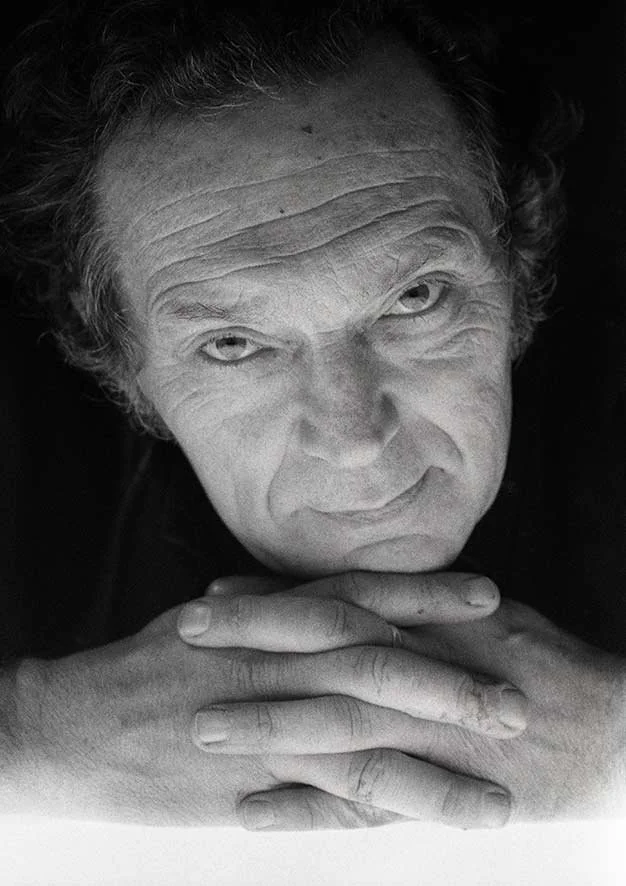Andre Sollier
Andre Sollier, Zen teacher
André Sollier was recommended to me by the Japanese Consulate in Melbourne. In 1973, I had decided that I should pursue my interest in Rinzai Zen Buddhism by going to Japan, to find a teacher.
“You do not need to go to Japan”, I was told, “we have a man right here in Melbourne who can teach you all you need to know”. A few days later, during a private introductory session at his Toorak flat, I was sitting in a lotus pose opposite André. At that time, I was going through a divorce, and was in a tumultuous emotional state.
André quizzed me on my knowledge of meditation, which I had taught myself. “In zazen (Zen meditation), we follow the breath”, André told me, “You can start by counting your breaths from one to ten. Let the pensées go”. André spoke with a strong French accent, interspersing his conversation with French terms, so I had to ask him what ‘pensées’ were. “They are thoughts, which are just illusions. Our ego is like a snake, reaching out to grab hold of these ideas. Simply let them go. If you become aware of your thoughts while you should be counting your breathing, start again at one and see if you can get to ten without interruption”.
That proved to be far easier said than done, but André assured me that, with practice, I could master it. He then invited me to become part of a regular group meditation, which met every Friday night. With this new information, I walked home, feeling as though I was walking on air. The concept of the snake as the ego attaching to ideas and objects was very powerful. I felt that I was about to undergo a personal revolution.
At the first Friday session, André spoke for fifteen minutes about some of the philosophical aspects of Zen, then lit a stick of delightfully perfumed Japanese incense; and struck a tiny bell to indicate the start of the meditation. There were several people in the group who were obviously far more experienced than I was, as I was struggling to remain in the lotus pose for the duration. The incense is the timer, when it burns right down the meditation is over, the bell is sounded again to bring everyone’s attention to further discussion, and answering of questions.
As time went by, I learned a great deal about André’s life. At that stage, he worked as a teacher of sumi-é (Japanese ink painting) at Preston Institute of Technical and Further Education. The National Gallery of Victoria holds some of his major works (see picture below). Sumi-é is practiced as one of the family of arts attached to Zen.
André had become a leading commercial illustrator in Sweden, during the 1950s. He was making a very good living, married to a woman who kept demanding more, such as a new car every year. His two teenaged sons had become juvenile delinquents. The marriage ended, and André set out on a trek to find himself.
He walked out of Sweden with a couple of meagre possessions, and kept walking down through Eastern Europe and across to India, then kept on walking into China and Korea. He next caught a boat to Japan, and sought admission to a Zen monastery. It is a part of tradition that aspirants be made to wait outside the gates of the monastery until the Master is ready to see them, sometimes having to wait for several days.
The Zen-master granted André an audience, and he was accepted into the ascetic monastery lifestyle, where he remained for the next twelve years. There, he studied sumi-é and kyudõ (Japanese archery). The kyudo master was a very old, blind man who was guided into the shooting position and told where the target was. The targets are a blank square, with no bull’s-eye. The master would shoot an arrow towards the target, and could tell by the sound of the arrow just how close he was to the centre. Thereafter, he would never miss!
André had met his future wife, Junko, and they sailed to Australia. They had a daughter, Yumi. He eventually bought an old house in the suburb of Mitcham, in a street appropriately named Orient Avenue. A very resourceful man, he used the weathered timber from an ancient shed in the back yard to build all of his living room furniture. He also built a concrete Japanese bath, which he tiled. It looked magnificent, but it was dreadfully hard to keep warm! He continued to practice and teach Kyudõ, as well as working towards exhibitions of his superb sumi-é works.
I shot the picture, above, at my house while I was mounting the slides I had shot for one of André’s shows at Raya Gallery, in Kew. He was sitting on the opposite side of the light-box I was working on, and when I looked up I had to do the old “Don’t move a muscle” to him, while I reached for my Nikon. I think the picture represents the wonderful aura of calmness which emanated from André, as well as his deeply centered, caring humanity. Possibly out of humility, he always denied being a Zen Master, though I regarded him as a major influence on my life.
He published several books including: ‘Introduction to Sumi-é’ and ‘The Zen Way of the Brush’.
André was born on 11 September 1922, and died in 2007. A wonderful teacher and friend.
‘Lotuses‘


